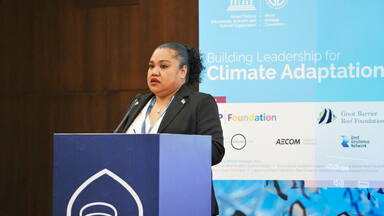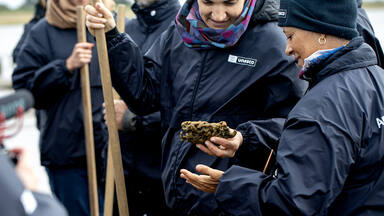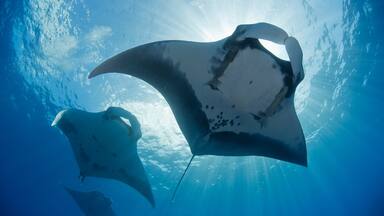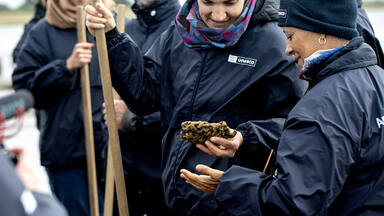How debt-for-nature swaps successfully finance UNESCO World Heritage conservation in Belize and Seychelles
Through innovative national debt restructuring and blue bond arrangements, both Aldabra Atoll in the Seychelles and the Belize Barrier Reef Reserve System in Belize are securing sustainable finance to help conserve their marine World Heritage sites over the next decades.
On 19 January 2022, global marine protected area practitioners met online with World Heritage managers from the Seychelles and Belize, and experts from The Nature Conservancy, who shared first-hand insights about how blue bonds and debt-for-nature swaps work, the conditions necessary to arrange them, and the building blocks to successfully provide long-term financing for conservation.
In December 2022, Belize’s national debt refinancing unlocked USD$ 180 million for ocean conservation with clear benefits to the Belize Barrier Reef Reserve System World Heritage site. The World Heritage site now receives USD$ 4 million annually until 2040, which will help to finance the planned increase in biodiversity protection zones to 30% by 2030, the strengthening of governance frameworks for domestic and high sea fisheries, and the creation of a Blue Carbon Framework. Two important milestones have already been achieved since the debt-for-nature with the designation of all remaining public lands within the World Heritage site as strict mangrove reserves, and an increase in the area of biodiversity protection zones to 20.5% (from 15.9% previously). An additional USD$ 90 million endowment fund is being built alongside these initiatives to provide financial support beyond 2040.
In the Seychelles, a first Blue Bond initiative was established in 2016 and now operates as the largest financial partner at the national level for the management of the Aldabra Atoll World Heritage site. An estimated USD$ 325 000 of support has been provided over the past five years to address key conservation challenges such as marine debris removal, assessment of the dugong population, mapping of coral population connectivity and ocean currents, and the need for surveillance equipment.
Setting up debt-for-nature swaps and Blue Bonds require strong conservation commitments at the national level and cooperation among the relevant ministries and government agencies, particularly those concerning finance and the environment. Successful implementation and enduring results tend to be largely dependent on participation among a broad spectrum of stakeholders. An independent conservation trust fund is typically set up in parallel to attract future complementary conservation financing.
Research shows that a majority of the world’s more than 18,000 marine protected areas fall short of their conservation goals due to a lack of adequate finance. Surveys conducted by UNESCO among the 50 World Heritage marine sites also consistently identify lack of financial support as one of the most urgent needs to sustainably protect sites’ biodiversity and ecosystems and to secure the science necessary for sound decision-making.
While financing lacks, conservation challenges are mounting. Climate change causes rapid changes to ocean biodiversity and ecosystems globally. Taken together with the responsibility to conserve places of Outstanding Universal Value for future generations, UNESCO World Heritage sites increasingly look for alternative solutions to finance ocean conservation for the long term.
The online meeting was the seventh edition in a digital exchange series that was launched by UNESCO’s World Heritage Marine Programme in April 2020. The online meetings provide a global platform where managers from the 50 marine World Heritage sites connect and share successes in tackling key conservation challenges.
Due to their status as flagship protected areas, UNESCO marine World Heritage sites are uniquely positioned to drive change and innovation, set new standards in conservation excellence, and serve as beacons of hope in a changing ocean.
The online meetings are made possible thanks to the support of the French Biodiversity Agency and the Great Barrier Reef Foundation.




